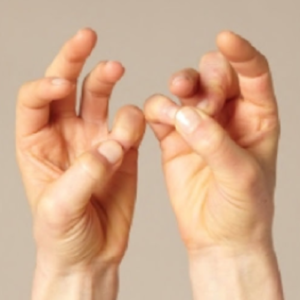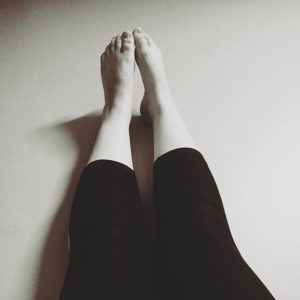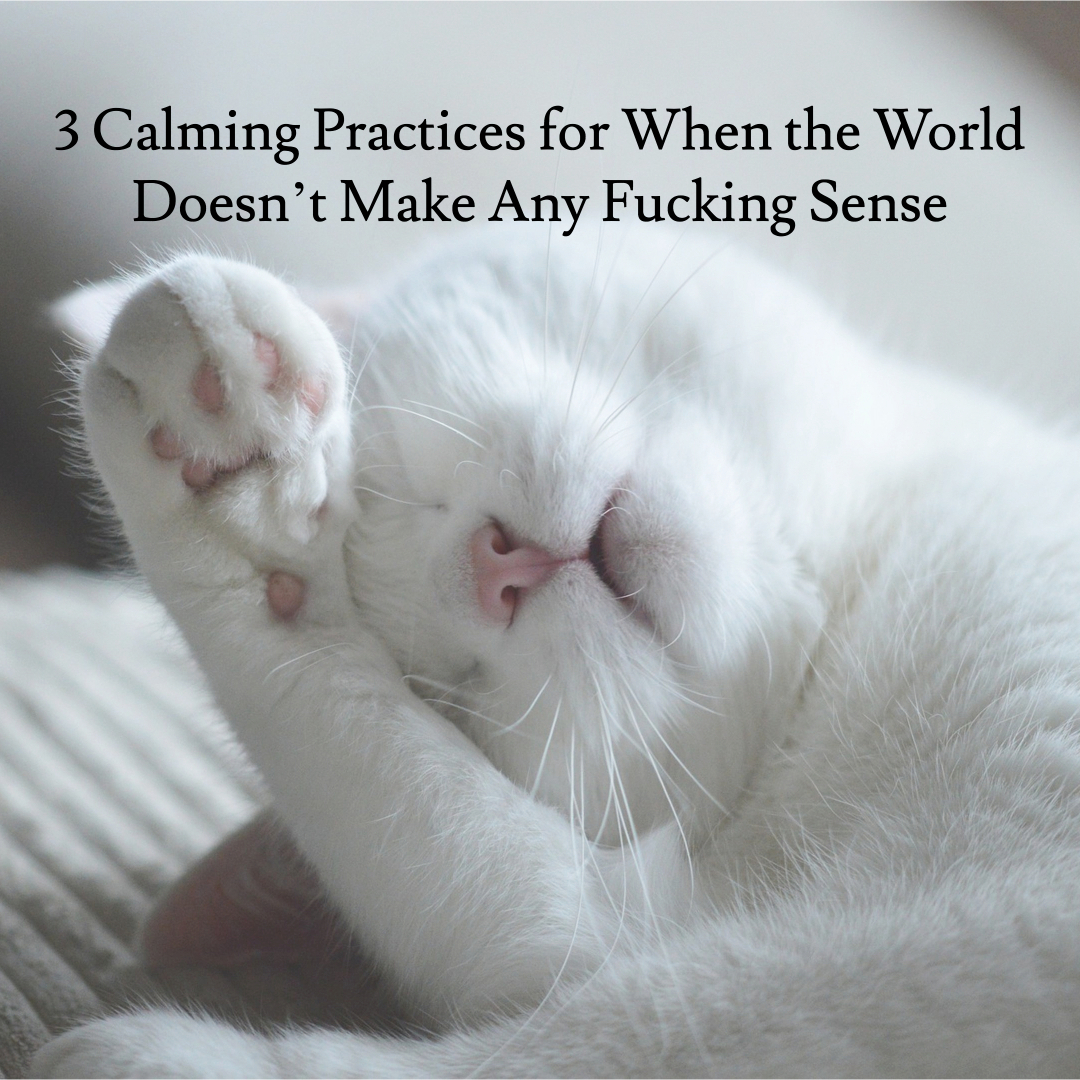Some days.
Or maybe it’s more like some weeks… months… even years…
When it seems like life is spiraling out of control. Things are moving too fast. You barely know how to hold on for the ride, much less figure out where you want to go. Or how you’re going to get there.
On the other hand, maybe you have your shit together. But the world? Not so much.
So when life throws you lemons, or coal, or loads of steaming poo… there are a few things you can do to help slow down what’s going on inside your head.
Now, you may be tempted to put all your focus on fixing the world.
But that’s step 2.
Before you can calm down the world, let’s start with you.
1. Deep Three-Part Breathing (Deergha Swasam)
Your mom may have taught you something about breathing when you were little. “When you’re angry take a deep breath and count to 10 before you say something you might regret.”
 Here’s another way to approach it: take 10 deep breaths.
Here’s another way to approach it: take 10 deep breaths.
Your breathing is the key to controlling both your body and your mind.
This breathing practice can be done whenever, wherever. Sitting at your desk, driving in your car, riding on the bus, laying down. Even on a beach, in a suit. Like that dude…
How to do it:
Step 1: Start by taking a slow, deep breath all the way down into your lower abdomen. Exhale fully, squeezing the air out of your lungs. Take another breath or two this way.
Step 2: Extend your inhale to include filling up your lower abdomen and into your lower ribcage. Exhale fully, and take another breath or two like this.
Step 3: Then extend your inhale to fill up your lower abdomen, ribs, and into your chest. Imagine the air filling you up from bottom to top, like water filling up a pitcher. With a deep enough breath, you might even feel your collarbones rise. Exhale fully, and take another breath or two.
After taking those breaths, you may feel like you’ve had enough. If so, return your breath to normal.
You can increase the number of breaths – as well as the length of the inhalations and exhalations – as you become more comfortable with the practice.
Health note: if you ever feel dizzy or lightheaded, stop immediately and return your breath to normal.
2. Sukham Mudra (Stress Relief Gesture)
The last mudra you learned was the Chin mudra.
 This week, we’ll take a look at another calming mudra, or hand gesture. No, not that kind of hand gesture… 😉
This week, we’ll take a look at another calming mudra, or hand gesture. No, not that kind of hand gesture… 😉
Sukham mudra is great for helping you survive (and maybe even thrive) in your fast-paced life. By taking a few minutes to slow down during your day, it can help you reduce your overall stress levels.
How to do it:
Bring the tip of your right thumb to meet the ends of your middle and little fingers. Then use the thumb of your left hand to press into the nail of your little finger.
Best practiced sitting down with your eyes closed, hold this mudra for at least a couple of minutes.
You can find more info here.
3. Legs Up The Wall (Viparita Karani)
This pose is quite possibly one of my favorites.
I usually end my day with this pose when I’ve been on my feet a lot, when I’m traveling, or when my to do list is pressing a little too insistently into my brain.
It’s not only great for relieving tired legs and feet, but also for helping with insomnia (especially when you can’t sleep because your brain won’t turn off). Reversing the pull of gravity on your circulatory and lymphatic systems is very beneficial; the lymphatic system doesn’t have its own pump, and most of the time the blood in your legs is fighting against gravity.
So turn your world upside down every once in a while. It’s good for more than a change in perspective.
How to do it:
There are a few options for this one.

I personally like laying in bed with my feet up the wall at the head of the bed. You can also lay on the floor if you’d like a more solid surface under your upper body.
You can even put a blanket or bolster under your buttocks or hips if it feels good, taking care to be gentle with your lower back.
Getting into and out of the pose is pretty simple. Sit down sideways next to the wall with one hip close to the wall. Lay down on your side, and then swing your feet up the wall as you roll onto your back.
Adjust the distance between your buttocks and the wall to get comfortable. You may need to bend your knees a little bit to get comfy.
Stay here for anywhere between 5 to 20 minutes. Admittedly, I’ve fallen asleep like this — it just makes your legs a little tingly when you wake up and realize your legs are still above your head.
When you release your legs, be sure to pause for a couple of breaths with your legs on the floor before you get up.
Health note: there are a few health conditions that contraindicate doing any kind of inversion. As always, check with your doc before engaging in physical activity.
4. Yoga Nidra
Extra bonus time!
What good super-relaxing routine would be complete without talking about Yoga Nidra?
I won’t go into too much detail here, since I wrote an entire post about it. Just know that this deep relaxation technique can do some pretty amazing things. If you’ve had one of those days (or weeks) where you feel like you just can’t take it any more, carve out 20 minutes and go through a session.
It’s easy, and the stress relieving benefits are pretty magical.
Make the transition from AAAAH! to ahhhh…
The world may be (more than) a little crazy, but that doesn’t mean you have to be.
Just imagine, a world where other people are freaking out and you’re calm, cool, and collected.
With a little bit of mindfulness and movement, you can take the first steps to getting there.
So go ahead — pick one of these stress-relieving techniques. (Or all of the above!)
And the next time you feel like you’re about to flip your shit, stop… and give one of these a try.
Are you already using stress relieving strategies? If so, how’s it going? If not, which of the techniques in this post are you going to try? Let me know in the comments!

Leave a Reply